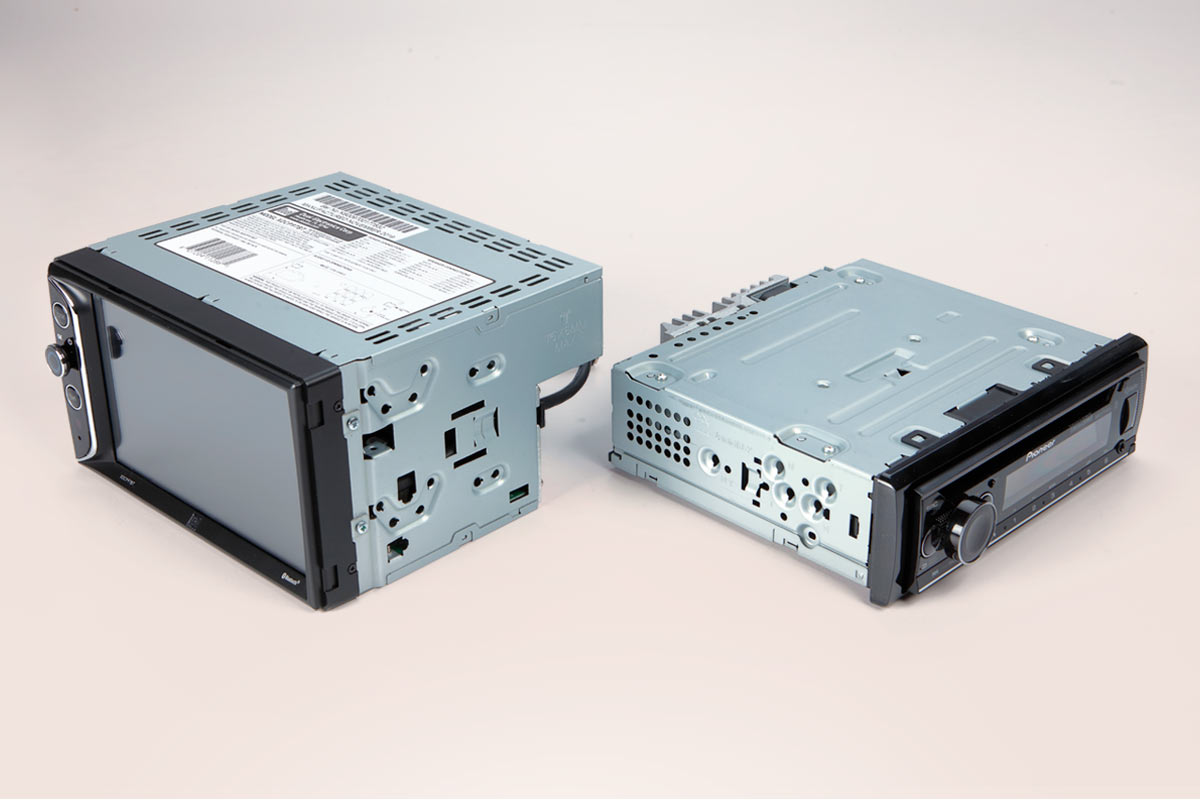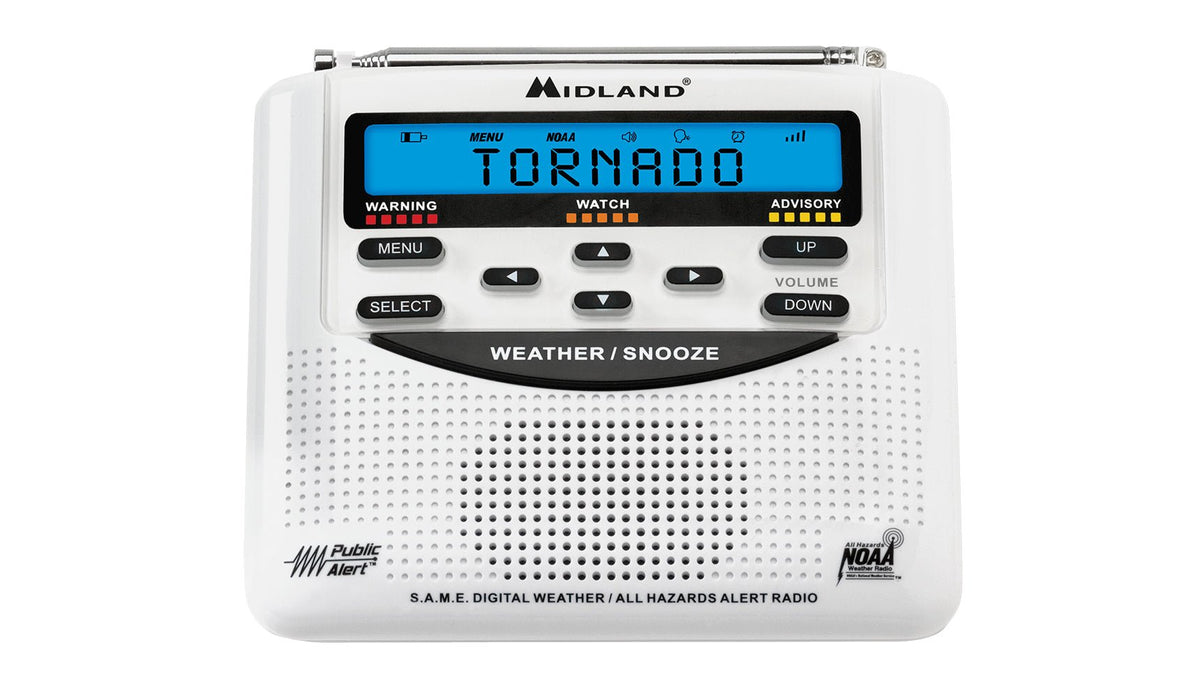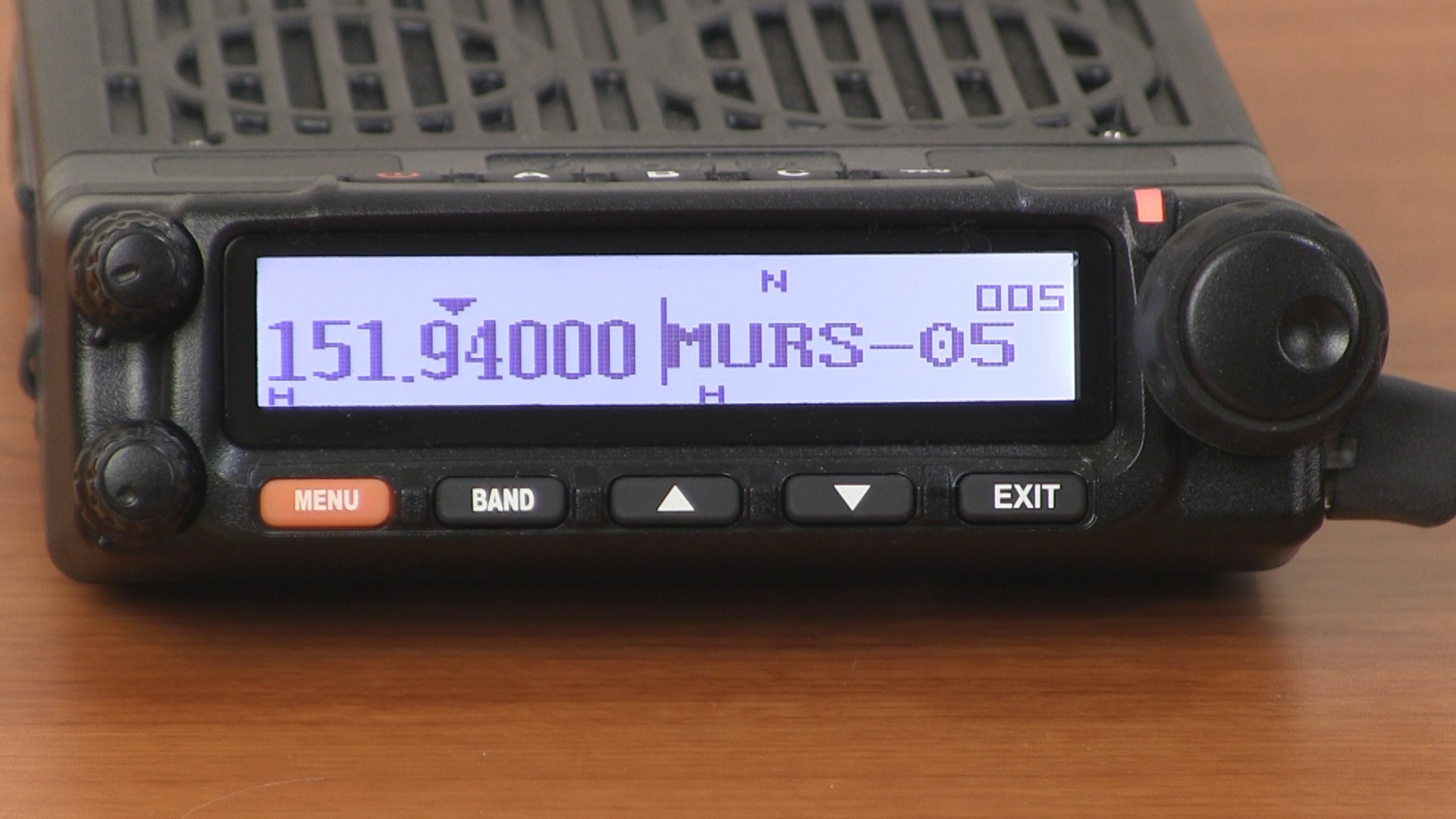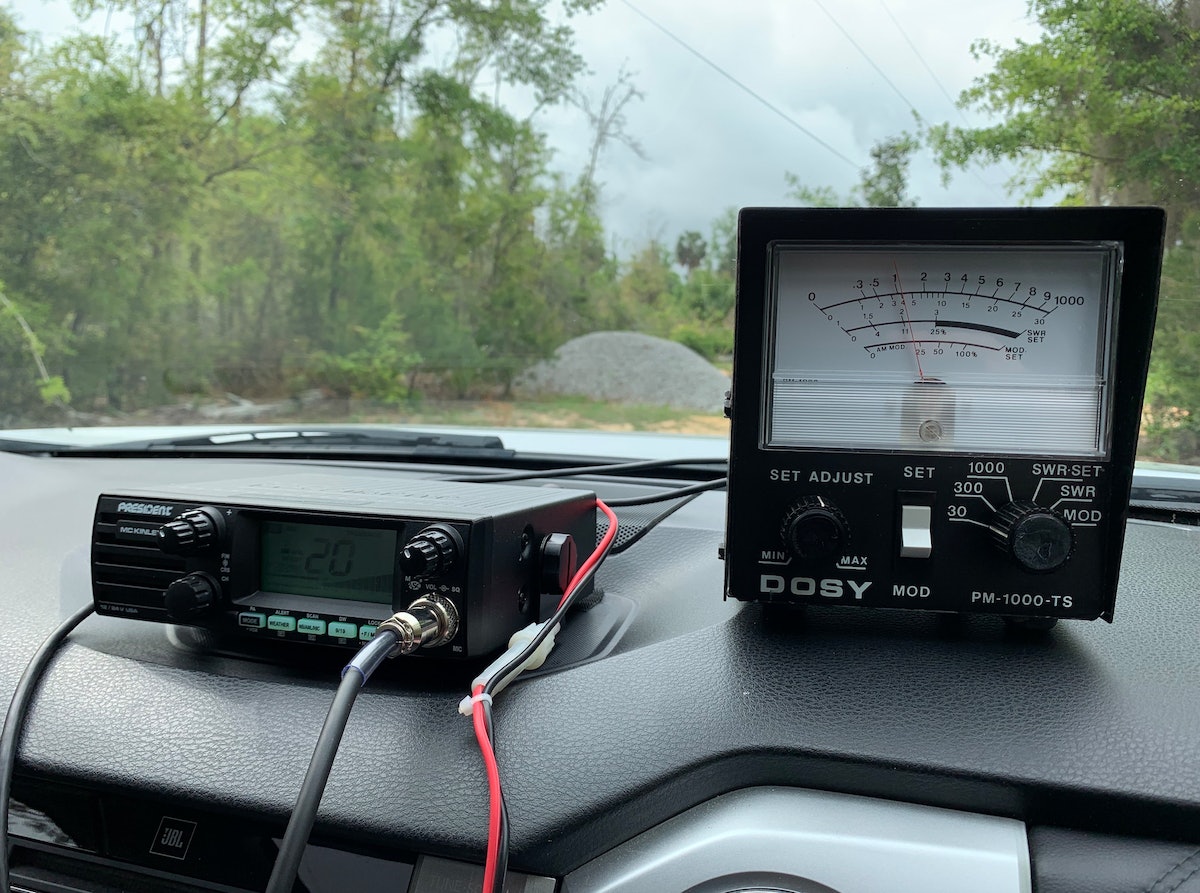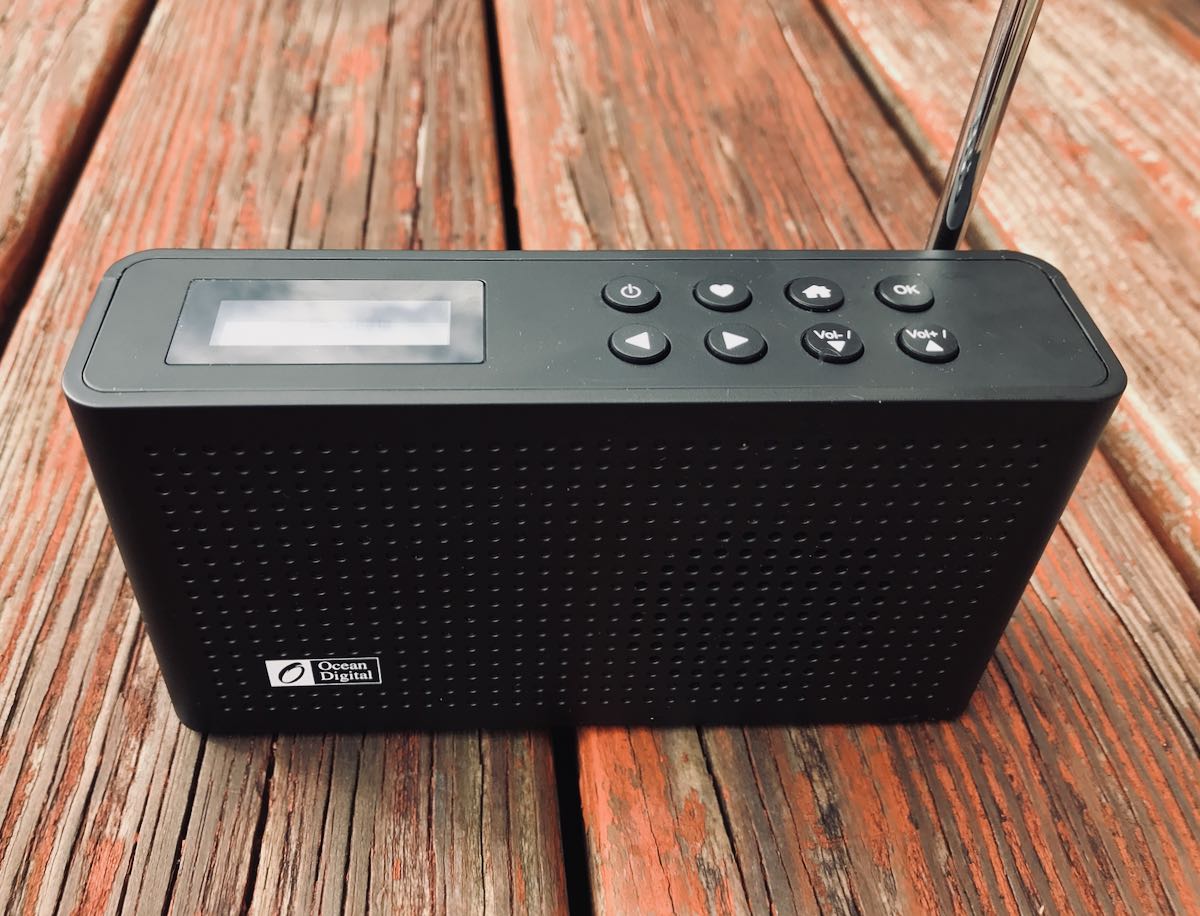Home>Devices & Equipment>Radio>What Is VHF Radio
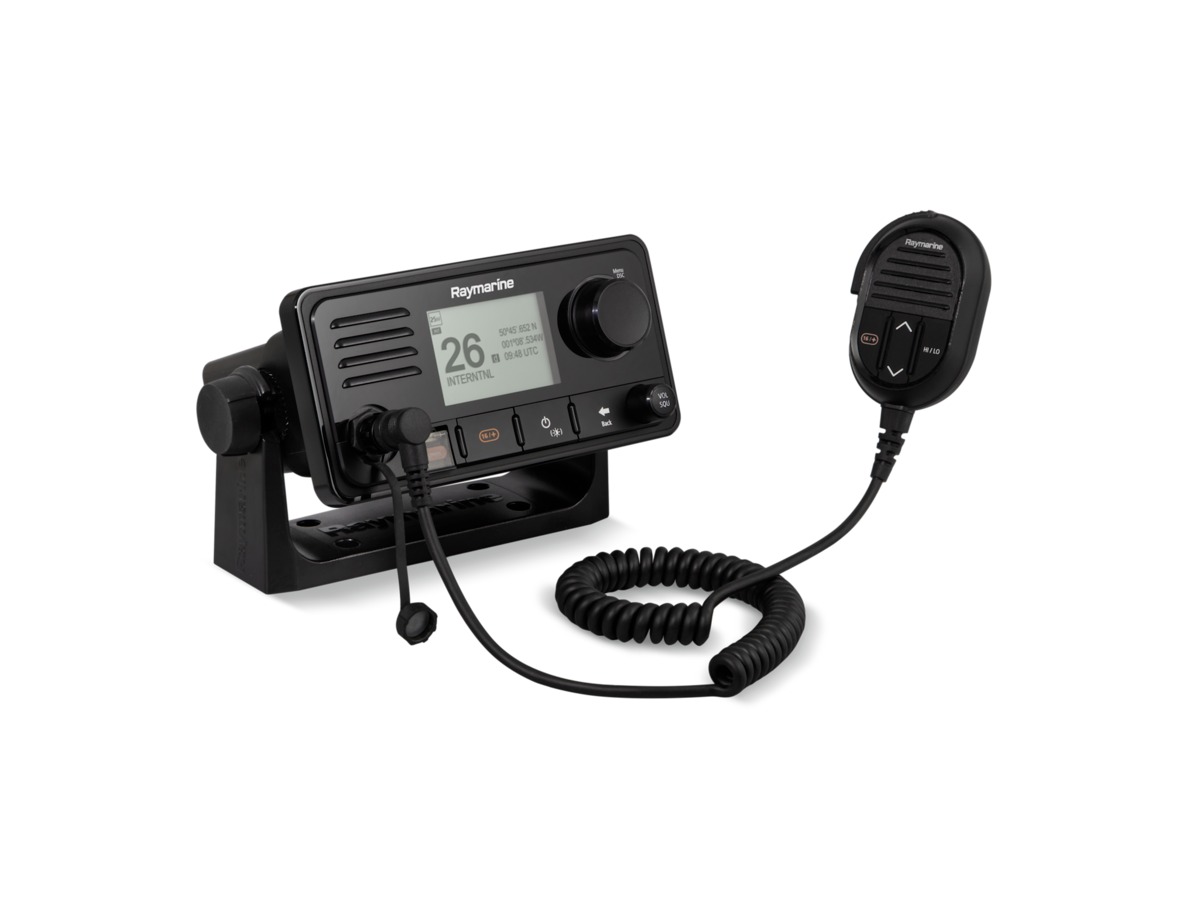

Radio
What Is VHF Radio
Modified: January 22, 2024
Discover what a VHF radio is and how it functions. Explore the uses and benefits of this essential communication device in various industries. Buy one today!
(Many of the links in this article redirect to a specific reviewed product. Your purchase of these products through affiliate links helps to generate commission for AudioLover.com, at no extra cost. Learn more)
Table of Contents
Introduction
VHF (very high frequency) radio plays a crucial role in our everyday lives, despite its technology being obscure to many. This powerful communication tool has been used for decades and is still widely relied upon in various industries and activities around the world. Understanding the basics of VHF radio can help you appreciate its significance and potentially benefit from its capabilities or services.
In simple terms, VHF radio refers to a system that uses radio waves to transmit and receive voice and data over a range of frequencies in the VHF band. This frequency range typically spans from 30MHz to 300MHz, making it suitable for long-range communication purposes. VHF radios are commonly used in marine, aviation, emergency services, public safety, and amateur radio applications.
One of the primary reasons for the popularity of VHF radio is its ability to provide efficient communication over long distances. Unlike lower frequency bands, VHF waves have a longer wavelength, allowing them to travel farther without disruptions. This makes VHF radio an ideal choice for applications that require reliable communication across vast areas, such as boating, air traffic control, search and rescue operations, and even recreational activities like hiking or skiing.
Moreover, VHF radio offers several advantages over other communication methods, such as cellular networks or satellite phones. It is less prone to network congestion during emergencies or heavy usage, ensuring prompt and uninterrupted communication. Additionally, VHF radio is a cost-effective solution as it doesn’t require any additional service provider subscriptions or roaming charges, making it accessible to a broader range of users.
However, VHF radio does have its limitations. Due to the longer wavelength, VHF signals are more susceptible to obstacles, such as buildings, hills, or vegetation, which can attenuate or block the signal. This can limit effective communication in dense urban areas or rugged terrains. Moreover, VHF radios have a lower data transmission rate compared to digital communication systems, making them unsuitable for high-bandwidth applications like video streaming or internet browsing.
In the following sections, we will dive deeper into the various aspects of VHF radio, including its uses, advantages, limitations, communication protocols, equipment, and safety guidelines. By the end of this article, you will have a comprehensive understanding of VHF radio and its significance in different industries and activities.
Understanding VHF Radio
VHF (very high frequency) radio is a communication system that utilizes radio waves in the VHF frequency range, which typically spans from 30MHz to 300MHz. These radio waves travel through the air and can be received by VHF radios equipped with the appropriate tuning capabilities. Understanding the key components and principles of VHF radio is essential for effectively utilizing this technology.
At the core of a VHF radio system is a transmitter and a receiver. The transmitter converts audio signals into radio waves and broadcasts them through an antenna. On the receiving end, the receiver picks up the radio waves using its antenna and converts them back into audio signals that can be heard by the user. This two-way communication enables real-time voice transmission and reception, making VHF radio a reliable and efficient means of communication.
The range of a VHF radio signal is determined by several factors, including terrain, antenna height, power output, and environmental conditions. Generally, VHF radio signals can travel over long distances, especially in open areas or over bodies of water, where there are minimal obstacles to impede the signal. However, in urban areas or areas with dense foliage, the signal may experience interference or signal loss due to buildings, hills, or vegetation.
The quality of communication in VHF radio systems can vary depending on the clarity of the signal. Factors that impact signal quality include radio interference, atmospheric conditions, and the power output of the transmitter. In scenarios where signal quality is compromised, users may experience static, background noise, or a weaker signal, which can hinder clear communication.
VHF radio systems operate on specific channels within the VHF frequency range. These channels are designated for different purposes, such as marine, aviation, public safety, or amateur radio. Each channel is assigned a specific frequency, which enables users to communicate within a predefined frequency range. It is important for VHF radio users to be familiar with the channel allocations and adhere to the regulations governing the use of these channels.
In summary, VHF radio is a communication system that utilizes radio waves in the VHF frequency range for two-way transmission and reception of audio signals. It offers reliable communication over long distances, making it suitable for various industries and activities. Understanding the principles and components of VHF radio is crucial for effectively using this technology and ensuring clear and efficient communication.
Uses of VHF Radio
VHF (very high frequency) radio is widely used in a variety of industries and activities due to its long-range communication capabilities and ability to provide reliable and instant communication. Let’s explore some of the key applications where VHF radio plays a crucial role:
- Marine Communication: VHF radio is an essential communication tool in the marine industry. It allows boaters, sailors, and the coast guard to communicate and coordinate activities on the water. VHF radios are used for distress calls, weather updates, navigational information, and general communication between vessels.
- Aviation Communication: In the aviation industry, VHF radio is used for air traffic control and communication between pilots and air traffic controllers. Pilots use VHF radios to receive flight instructions, weather updates, and to communicate with other aircraft in their vicinity.
- Public Safety and Emergency Services: VHF radio is widely used by public safety agencies, such as police, fire departments, and emergency medical services. It enables effective communication during emergency situations, facilitating coordinated responses and ensuring the safety of both the public and first responders.
- Amateur Radio: VHF radio is popular among amateur radio operators who enjoy the hobby of two-way radio communication. It allows them to communicate with fellow amateur radio operators locally or over long distances using repeaters and antennas.
- Outdoor Recreation: VHF radios are often used in outdoor recreational activities such as hiking, camping, and skiing. These radios provide a means of communication in remote areas where cellular networks may not be available or reliable. Outdoor enthusiasts can use VHF radios to stay connected, coordinate activities, and call for help in case of emergencies.
- Construction and Industrial Sites: VHF radios are employed in construction and industrial environments where reliable communication is crucial for safety and efficiency. They enable workers to communicate with each other, supervisors, and equipment operators, facilitating smooth operations and ensuring the well-being of the workforce.
These are just a few examples of the many uses of VHF radio. Its long-range communication capabilities, broad user base, and versatility make it an indispensable tool in various industries and activities. Whether it is for safety, coordination, or recreational purposes, VHF radio offers a reliable and efficient means of communication.
Advantages of VHF Radio
VHF (very high frequency) radio offers several advantages that contribute to its widespread use and popularity in various industries and activities. Let’s explore some of the key advantages of using VHF radio:
- Long-Range Communication: VHF radio signals have a longer wavelength compared to higher frequency bands, allowing them to travel farther without disruptions. This makes VHF radio ideal for applications that require communication over long distances, such as marine and aviation industries.
- Reliable Communication: VHF radio operates independently of cellular networks and internet connectivity. This ensures that communication remains stable and uninterrupted even during network congestion or in areas with limited infrastructure. It is particularly crucial during emergencies or in remote locations where other means of communication may not be available.
- Real-Time Communication: VHF radio enables instant and real-time communication, eliminating the delays often associated with other forms of communication. This allows for quick decision-making, efficient coordination, and timely response to emergencies or critical situations.
- Cost-Effective: Utilizing VHF radio does not require additional service provider subscriptions or recurring charges. Once the radio equipment is procured, there are no additional costs associated with using VHF radio communication. This makes it an affordable solution for businesses, organizations, and individuals, particularly in industries with tight budgets.
- Easy to Use: VHF radios are designed to be user-friendly, with intuitive controls and straightforward operation. They typically have dedicated buttons for essential functions, such as changing channels or adjusting volume. This makes them accessible to users without extensive technical knowledge or training.
- Wide Availability: VHF radios and equipment are widely available from various manufacturers and suppliers. This ensures that users have a wide selection of models to choose from, catering to their specific needs and preferences. Additionally, VHF radio communication protocols and frequencies are standardized, enabling interoperability between different brands and models.
These advantages make VHF radio a reliable, cost-effective, and accessible communication solution for a wide range of industries and activities. Whether it’s for professional use in maritime or aviation applications, public safety, or recreational purposes, VHF radio provides the means to communicate efficiently and effectively over long distances, helping to ensure safety, coordination, and successful outcomes.
Limitations of VHF Radio
While VHF (very high frequency) radio offers numerous advantages, it is important to be aware of its limitations. Understanding these limitations can help users make informed decisions and identify alternative communication methods when necessary. Let’s explore some of the key limitations of VHF radio:
- Line-of-Sight Communication: VHF radio signals operate on line-of-sight propagation, meaning they require a clear and unobstructed path between the transmitter and receiver. Buildings, terrain features like hills or mountains, and dense vegetation can block or attenuate VHF signals, potentially limiting the range and effectiveness of communication.
- Signal Interference: VHF radio signals are susceptible to interference from various sources, including other VHF radios operating on the same frequency, electrical equipment, atmospheric conditions, and natural phenomena like solar flares. Interference can cause signal degradation, resulting in static, background noise, or reduced communication clarity.
- Data Transmission Limitations: VHF radio is primarily designed for voice communication and is not optimized for high-bandwidth data transmission. While basic data transmission, such as sending text messages or basic telemetry, is possible, the data rate is limited compared to digital communication systems. Streaming video or internet browsing is not feasible using VHF radio.
- Geographical Limitations: While VHF radio offers good communication range in open areas or over bodies of water, its effectiveness may diminish in urban environments with numerous buildings or in rugged terrains with complex topography. The presence of obstacles can cause signal reflections, multipath interference, and signal loss, reducing the reliability and range of communication.
- Limited Privacy: VHF radio transmissions are generally accessible to anyone within range who is tuned to the same frequency. This lack of privacy can be a concern for sensitive communications or situations where confidentiality is required. However, privacy can be enhanced by using encryption or implementing protocols that limit access to authorized users.
- Environmental Factors: VHF radio performance can be influenced by environmental conditions. Changes in atmospheric conditions, such as temperature inversions or extreme weather conditions, can affect signal propagation and reduce the range of communication. Awareness of these environmental factors is important when relying on VHF radio for critical operations.
Despite these limitations, VHF radio remains a valuable communication tool in many industries and activities. By understanding these limitations and implementing suitable mitigation strategies, users can maximize the reliability and effectiveness of VHF radio communication while being aware of its potential constraints.
VHF Radio Channels and Frequencies
VHF (very high frequency) radios operate within designated channels and frequencies to ensure effective and organized communication. Understanding the channel allocations and frequencies associated with VHF radio is crucial for proper usage and compliance with regulations. Let’s explore the key aspects of VHF radio channels and frequencies:
Various industries and activities utilize specific channels within the VHF frequency range, typically allocated by regulatory bodies such as the Federal Communications Commission (FCC) in the United States. These channels serve different purposes and are often assigned to specific sectors or organizations.
For example, in maritime applications, VHF radios make use of channels specifically dedicated to marine communication. These channels allow boaters, sailors, and the coast guard to communicate and coordinate their activities. Similarly, in aviation, VHF radio channels are assigned for air traffic control and communication between pilots and air traffic controllers.
Each VHF radio channel is assigned a specific frequency within the VHF frequency band. The frequency represents the number of wave oscillations per second and is measured in Hertz (Hz). The selection of frequencies for different channels is based on factors such as interference avoidance, channel capacity, and compatibility with other radio services.
In the United States, the VHF marine band channels range from 156.000 MHz to 157.425 MHz and are designated with channel numbers from 1 to 88. These channels are used for various purposes, including distress calls, hailing and safety communications, and ship-to-ship or ship-to-shore communication.
The allocation of VHF radio channels and frequencies varies between countries. It is important for users to be aware of the regulations in their respective regions and ensure compliance with the assigned frequencies for specific applications.
It is also worth noting that within each channel, there are typically two frequencies used: the simplex frequency and the duplex frequency. The simplex frequency is a single frequency used for communication in both directions. The duplex frequency, on the other hand, is used for communication with repeaters or base stations, allowing for extended range and enhanced coverage.
When operating VHF radios, it is essential to select the appropriate channel and use the corresponding frequency. Understanding the channel allocations, frequencies, and associated regulations ensures proper communication and helps avoid interference with other radio users.
In summary, VHF radio channels and frequencies play a crucial role in facilitating effective and organized communication. The allocation of specific channels for different industries and activities ensures efficient coordination and helps prevent communication conflicts. By adhering to the assigned frequencies within each channel, users can communicate securely and effectively using VHF radio systems.
VHF Radio Communication Protocol
Effective communication over VHF (very high frequency) radio relies on adhering to a standard communication protocol. Following a predefined communication protocol ensures clarity, efficiency, and eliminates confusion during transmissions. Let’s explore the key elements of the VHF radio communication protocol:
1. Clear and Concise Communication: When using VHF radio, it is important to communicate in a clear and concise manner. Speak clearly, enunciate words, and avoid using jargon or abbreviations that may not be universally understood. Keep transmissions brief to allow for other users to communicate.
2. Proper Radio Etiquette: VHF radio has its own set of etiquette rules, which users should follow for effective communication. Begin each transmission by clearly stating the channel number and any additional information, such as the station or person being addressed. Wait for a response before transmitting again, and use politeness and respect when interacting with other users.
3. Professional Tone and Language: While using VHF radio, maintain a professional tone and language. Avoid using inappropriate or offensive language that could offend or disrupt other users. Remember, VHF radio is a shared frequency, and maintaining professionalism is essential for effective communication.
4. Use of Standardized Phrases and Codes: VHF radio communication often involves the use of standardized phrases and codes to convey information efficiently. These phrases, known as “pro-words,” include terms like “over” to indicate the transmission is finished and a response is expected, or “roger” to acknowledge receipt of a message. Familiarize yourself with these pro-words and use them appropriately.
5. Distress Calls and Emergency Communication: In emergency situations, VHF radio users should be familiar with distress call procedures. The internationally recognized distress call is “Mayday.” When sending a distress call, clearly state the word “Mayday” three times, followed by the vessel’s name, nature of distress, and the position. It is important to use the distress frequency assigned for the specific region or industry.
6. Listening and Interference Avoidance: Practice active listening when using VHF radio to avoid inadvertently transmitting over other users or interfering with ongoing transmissions. Monitor the channel before transmitting to ensure it is clear. If a channel is already in use, wait for a break or seek an alternate channel to communicate.
7. Use of Phonetic Alphabet: To ensure accurate and clear communication of letters or numbers, it is important to use the international phonetic alphabet. This alphabet assigns specific words, such as “Alpha” for the letter “A,” “Bravo” for the letter “B,” and so on. Using the phonetic alphabet helps prevent confusion or errors in understanding transmitted information.
Following these communication protocol guidelines helps ensure effective and efficient VHF radio communication. It promotes clarity, avoids confusion, and contributes to overall safety in various industries and activities that rely on VHF radio systems.
VHF Radio Equipment and Accessories
VHF (very high frequency) radio equipment and accessories play a crucial role in enabling effective communication and ensuring the reliability of VHF radio systems. Let’s explore some of the key equipment and accessories commonly used in conjunction with VHF radios:
1. VHF Radio Units: The primary component of a VHF radio system is the VHF radio unit itself. These units come in a variety of sizes and designs, ranging from handheld portable radios to fixed base stations. Consider factors such as frequency range, power output, waterproofing capabilities, battery life, and ease of operation when selecting a VHF radio unit.
2. Antennas: Antennas are essential for transmitting and receiving radio signals. They come in various types, including whip antennas for handheld radios and larger external antennas for base stations or maritime applications. The choice of antenna depends on the specific use case and desired range of communication.
3. Batteries and Chargers: To ensure uninterrupted communication, it is important to have reliable batteries for portable VHF radios. Rechargeable batteries or spare battery packs are recommended to ensure continuous operation. Additionally, having a suitable charger to recharge the batteries is essential for maintaining optimal battery performance.
4. Headsets or Earpieces: Headsets or earpieces facilitate hands-free communication and improve privacy when using VHF radios. They allow users to communicate without holding the radio unit directly. Some headsets also provide noise-canceling capabilities, improving communication clarity in noisy environments.
5. Microphones: External microphones are available for VHF radios, particularly for base stations or installations where easy access to the radio unit’s controls is required. Microphones often include additional features such as channel selection buttons, volume control, and speaker output.
6. Mounting Hardware: For base stations or fixed installations, mounting brackets or hardware may be required to secure the VHF radio unit and antenna in place. This ensures stability and proper positioning for optimal signal transmission and reception.
7. External Speakers: In scenarios where improved audio quality or increased volume is desirable, external speakers can be connected to VHF radios. These speakers enhance audio output, making it easier to hear incoming messages in noisy environments or over long distances.
8. Radio Programming Software: Some VHF radios offer programming capabilities through dedicated software. This software enables customization of channels, programming of radio settings, and easy management of large fleets of radios. It streamlines the configuration and maintenance of VHF radio systems for businesses or organizations.
9. Mountable GPS Receivers: In marine or outdoor applications, mountable GPS receivers can be integrated with VHF radios. This allows for the transmission of accurate position information, enhancing safety and facilitating search and rescue operations.
These are just a few examples of the equipment and accessories available for VHF radios. The specific needs and requirements of your application will dictate the necessary equipment and accessories to ensure reliable and effective communication using VHF radio systems.
VHF Radio Safety Guidelines
While VHF (very high frequency) radio is a valuable communication tool, it is important to ensure the safe and responsible use of this technology. Adhering to safety guidelines helps prevent accidents, maintain effective communication, and promote a secure operating environment. Let’s explore some key VHF radio safety guidelines:
1. Familiarize Yourself with Local Regulations: Be aware of the regulations governing the use of VHF radio in your region. Understand the designated channels, frequencies, and any restrictions or licensing requirements that may apply. Adhering to these regulations ensures compliance and effective communication with other radio users.
2. Practice Proper Radio Etiquette: Follow established radio etiquette to ensure efficient and respectful communication. Use clear and concise language, identify yourself and the party you are addressing, and avoid unnecessary transmissions that may congest the channel. Maintain a professional and courteous tone for effective collaboration with other users.
3. Listen Before Transmitting: Practice active listening by monitoring the channel before transmitting. This allows you to get a sense of the ongoing communication and ensures that you do not interrupt or interfere with other users. Wait for a break in the conversation or seek an alternate channel if the frequency is already in use.
4. Exercise Caution with Emergency Distress Calls: When making emergency distress calls, use the internationally recognized distress signal “Mayday” to indicate a critical situation. Clearly state the nature of the distress and your vessel or location information. Only use distress calls in genuine emergencies to avoid false alarms and unnecessary response efforts.
5. Keep Transmissions Brief: Transmit concise and necessary information to allow other users the opportunity to communicate. Avoid lengthy transmissions or unnecessary chatter that may disrupt critical communications. Respect the shared frequency and strive for effective and efficient communication.
6. Be Mindful of Environmental Factors: Environmental conditions can affect VHF radio performance. Be aware of changes in atmospheric conditions, such as temperature inversions or weather patterns, which may impact signal propagation. Understand the limitations of VHF radio in terms of range and signal quality under different environmental circumstances.
7. Emergency and Safety Procedures: Familiarize yourself with emergency and safety procedures relevant to your specific industry or activity. Understand how to use VHF radio to call for help, send distress signals, or notify authorities of any hazards or emergencies. Regularly practice emergency drills to ensure preparedness.
8. Maintain and Inspect Equipment: Regularly inspect and maintain your VHF radio equipment to ensure its proper functioning. Check battery levels, antenna connections, and general condition. Perform routine maintenance tasks recommended by the manufacturer, and promptly address any issues or malfunctions that may arise to ensure reliable communication.
9. Consider Additional Safety Devices: Depending on your specific application, consider additional safety devices such as personal locator beacons (PLBs), life jackets, or distress flares. These devices can provide added safety measures in emergency situations and work in conjunction with VHF radio communication.
By following these VHF radio safety guidelines, you can help ensure the efficient and secure use of VHF radio systems while promoting effective communication and mitigating potential risks.
Conclusion
VHF (very high frequency) radio is a powerful communication tool that has been utilized for decades in various industries and activities. It offers long-range communication capabilities, reliable connectivity, and instant communication, making it an essential technology in fields such as marine, aviation, public safety, and outdoor recreation. Despite its advantages, it is important to be aware of the limitations and adhere to the proper protocols when using VHF radio.
Understanding the principles of VHF radio, including its frequency range, line-of-sight communication, and signal interference, allows users to make informed decisions and effectively address any challenges that may arise. By following the appropriate communication protocol, maintaining clear and respectful dialogue, and being mindful of environmental factors, users can ensure reliable and efficient communication over VHF radio.
The availability of VHF radio channels and frequencies specific to different industries allows for organized and coordinated communication. Familiarizing oneself with the allocated channels and authorized frequencies ensures compliance with regulations and promotes clear communication among users.
Moreover, the use of proper VHF radio equipment and accessories, such as radios, antennas, batteries, and headsets, enhances the overall communication experience. Adhering to safety guidelines, practicing responsible usage, and being prepared for emergency situations are equally important aspects of using VHF radio systems.
VHF radio continues to play a vital role in connecting individuals, organizations, and communities. Its reliability, cost-effectiveness, and versatility make it a preferred choice for long-range communication needs. As technology advances, it is important to stay informed about new developments and updates within the VHF radio industry.
In conclusion, VHF radio serves as an indispensable communication tool across various sectors. Its benefits and applications make it a reliable and efficient means of communication, while adhering to safety protocols and regulations ensures its responsible use. By leveraging the capabilities of VHF radio and maintaining a commitment to proper communication practices, users can effectively communicate, coordinate activities, and enhance safety in their respective fields.

